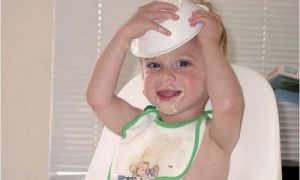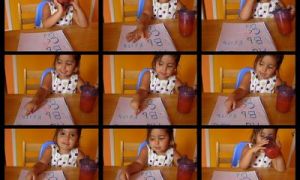Challenging Behaviour is when a child does something that hurts themselves and/or other people.
These types of behaviours can prevent children from participating in activities. They can harm others and are stressful and upsetting for all involved.
Children who display challenging behaviour don’t usually do so ‘just because they want to’. There’s often a reason behind their behaviour or it might be their only way of telling you something’s wrong. All behaviour is a form of communication. Therefore, it’s essential that you understand the causes of challenging behaviour.
Impacts Of Challenging Behaviour
When a child displays challenging behaviours, there can be significant impacts for both children and adults that may contribute to educators feeling overwhelmed.
It may be helpful to consider the following impacts when considering how to address challenging behaviours.
The child with challenging behaviours often experiences:
- Disrupted learning - they may not attend group time or stay engaged in experiences long enough to complete them
- Difficulty forming friendships
- Difficulty taking on new challenges and completing tasks
- Safety Issues - such as climbing fences, slamming doors, throwing objects.
Impacts on other children include:
- Being physically hurt, frightened or intimidated by the child.
- Persistent disturbance interferes with the child’s learning and educators’ ability to teach.
The family of the child with challenging behaviours may:
- Be angry or distressed about the behaviour
- Be embarrassed and reluctant to talk with staff or other families
- Seek additional services from other agencies
- Look for advice and support from educators.
Families of other children may:
- Be angry or distressed by the behaviour
- Respond negatively and threaten to withdraw their child or demand that other children be asked to leave
- Ask for educators to act immediately and ‘fix’ the problem
- Argue with or blame another child’s family
- Request a whole centre strategy
- Seek recourse through the site behaviour policy.
Impacts On Educators include:
- Have differing views about the significance of the behaviour and not react consistently to the behaviour
- Become stressed, angry or feel helpless
- Have different ways of dealing with the behaviour
The pressure on educators is often to ‘fix’ the problem quickly. Often an initial reaction is to apply new consequences to the problem behaviour. However, this can result in an escalation of the problem behaviour and/or new behaviours.
Gather Information About The Child
Who
- Parents or Guardians
What They Can Tell You
- Home life, including values, cultural practices, expectations and beliefs
- How the child behaves in various environments
- Who the child responds to triggers
- What strategies they use
- What strategies work and don’t work
- What strategies they would not like you to use
How To Gather Information
- Discussions
- Meetings
- Surveys
- Forms
Who
- Other educators
What They Can Tell You
- Their observations
- Their experiences with the family and child
- Out-of-character behaviour, expected behaviour and behaviour of concern
- Triggers
- What strategies they have used – successfully or unsuccessfully
- Their specialist training or experience
How To Gather Information
- Observation records
- Portfolios
- Notes from past information gatherings
- Behaviour plans
- Discussions
Who
- Specialists
What They Can Tell You
- Diagnosis
- Triggers
- Key features
- Links to other developmental areas
- Situations to avoid
How To Gather Information
- Discussions
- Assessments
- Reports
- Meetings
Addressing Challenging Behaviours
When children use challenging behaviours to communicate, they often do not start off with the purpose of communicating negatively. Their behaviour is usually a reaction, with the child using the method they might think of at the time to communicate their needs.
To identify the message that a child is trying to send, you need to look for the reason behind their behaviour
- Regulation - Actions used to gain, refuse or avoid something. The result of the behaviour is that the environment changes. The child is saying: ‘I don’t want that.’
Examples - A child pushes another child away, a child throws a cup of milk when they want water, a child screams when they are overwhelmed by too many people in their space.
- Interaction - Actions used to interact with another person. The result is that the other person takes notice. The child is saying: ‘I want you to listen to or notice me.’
Examples - A child pinches another child when they ignore them, a child bites when they don’t know how to enter the play, a child tells another child to pack up, then pushes the child’s block tower over to communicate that it is pack-up time.
Involving Support Services
If you identify behaviour of concern, or feel that you need advice in guiding behaviour, there are plenty of people that can help you. Making decisions about a behavioural situation is not your responsibility alone. You can seek the support of your supervisor, colleagues and service management, as well as professional organisations. Consult with these people, particularly if the behavioural issue is concerning.
Remember that before you involve an outside body you must gain parental permission. You should make it clear that you are not only seeking support or assessment for the child. Your main objective is to obtain support and advice so that you can meet the child’s needs.
Some early intervention professionals who will be of assistance are:
- Early Childhood Intervention Services (ECIS)
- Preschool Field Officers (PSFO)
- Inclusion Support Facilitators (ISF)
- paediatric services
- other health professionals such as psychologists, speech pathologists, or occupational therapists.
Where families do not give consent for support services’ intervention, educators have a responsibility to:
- Develop a behaviour program for the child which is informed by their observations
- Record the child’s behaviour
- Consider the reason for the child’s behaviour
- Take into account the child’s chronological age and stage of development.
Review The Program
- Note triggers, behaviour patterns, ‘danger’ times and periods when the challenging behaviour does not happen.
- Look at the environment, routines, structures and group composition. Are there possible modifications that would encourage appropriate behaviours?
- Consider support strategies, eg early intervention funding, bilingual support or telephone advice from support services.
- Assess the impact of the child’s behaviour on others and address as required.
Plan, Implement and Review Intervention Strategies
Where challenging behaviours are emerging, advice for a whole site approach can be provided by support services.
If challenging behaviours are placing the child or others at risk of injury, an Individual Behaviour Plan should be developed with relevant specialised services and the family. The plan will support teaching children functionally appropriate ways to communicate and aim to decrease the frequency and severity of challenging behaviours.
This plan will require consistent implementation by all educators. Families are also encouraged to use a consistent approach at home.
Educators are encouraged to seek advice from support services where strategies such as time out or physical holding to prevent the child from injuring him/ herself or others are being considered.
Ongoing Communication With The Child's Family
- Maintain a high level of communication about the child’s progress, needs and involvement in the program.
- Encourage consistency in approach at preschool and home.
Communication with Educators
- Make time to regularly discuss and monitor intervention strategies and emerging issues.
- Staff consistency in the approach to behaviour management is critical.
Strategies for Managing Challenging Behaviour
Once you have identified if there are any triggers to the behaviour you may choose to try some of these behaviour management techniques:
Reward charts/cards – This is useful for=p[;'pall children in an early years setting. You may have a form of traffic light system where the child can visually see when they have received a warning or are displaying unacceptable behaviour. You may choose individual sticker/ hole punch cards.
Praise – Praise the good and ignore the negative. This can not be applied to all situations so it is important that you identify the effectiveness of this strategy through observations. Concentrating on positive behaviour will allow a child to focus on what is expected rather then what is not.
Be positive – Use positive behaviour management techniques and rules by asking for the behaviour you would like to see rather than identifying the behaviour you wouldn’t like to see. For example instead of ‘No running’ ask for ‘walking inside please’
Use visual sand timers and five minute warnings – This is useful for children who are struggling with transition times. As well as giving the whole group a five minute warning, specifically inform the child with the challenging behaviour that they have five more minutes and place the sand timer where they can see it.
Remove anything which can cause harm – If you have a child who lashes out, remove any other children from the situation and if they are likely to throw objects calmly remove these from the child’s reach.
Be consistent – Try one approach and stick with it.
Key person – Ensure the child has a key person who they have built a strong relationship with, this may enable the child to go to them to express themselves rather then displaying challenging behaviour.
Use visual timetables – Again another strategy for a child who is struggling with routine or transition times. Show them using visual images what is going to happen throughout the day and next.
Stay calm – Sometimes when dealing with challenging behaviour the situation can become over whelming, it is okay to find the situation difficult and to ask for support from another member of staff.
Create behaviour or routine cards – These can be carried around on a key ring in practitioner’s pockets. These can then be showed to a child wherever you are.
Tune in – Continue observations and tune in to what the child is really trying to tell you through their challenging behaviour.
Children at times will display challenging behaviour and it can often feel like you have tried every technique in the book and followed all the advice given. However there is always something which can be done to improve the situation. It is just trial and error and patience to find the correct techniques to support the individual child.
References:
Managing Challenging Behaviour In Early Years Setting, Early Years Careers
Responding To Challenging Behaviours, Childcare Gov
Challenging Behaviour In The Classroom, High Speed Training
Effective Approaches For Managing Children's Behaviour, Engage Education Australia
CHCECE006 Support Behaviour Of Children and Young People, One World For Children
Supporting and Managing Children's Behaviour, Depart Of Education and Children's Services
Strategies To Guide Behaviour, Department Of Education and Training


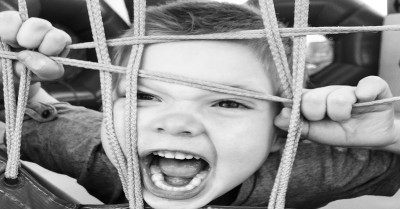
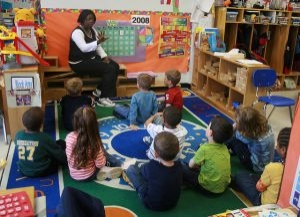 Working as a childcare professional can be a challenge especially when dealing with behavioural problems which may arise. The techniques we use when dealing with
Working as a childcare professional can be a challenge especially when dealing with behavioural problems which may arise. The techniques we use when dealing with There are different types of behaviour that children can display and sometimes it can be hard to manage, especially if a child is having behavioural
There are different types of behaviour that children can display and sometimes it can be hard to manage, especially if a child is having behavioural As a parent, your behavioural expectations of your child can be higher than what is actually developmentally appropriate for your child's age.
As a parent, your behavioural expectations of your child can be higher than what is actually developmentally appropriate for your child's age.
 As Educators, there will be many instances where you will need to write about a child's behaviour. For a behaviour management plan, assessments, half-yearly or
As Educators, there will be many instances where you will need to write about a child's behaviour. For a behaviour management plan, assessments, half-yearly or As Educators when communicating with Parents (through verbal or non-verbal communication), there will be times where we need to discuss issues or concerns that may
As Educators when communicating with Parents (through verbal or non-verbal communication), there will be times where we need to discuss issues or concerns that may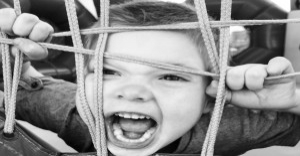 Challenging Behaviour is when a child does something that hurts themselves and/or other people.
Challenging Behaviour is when a child does something that hurts themselves and/or other people.
 As part of your child's development it is normal for your child to have anxiety and fears. A baby commonly shows a fearful sign to
As part of your child's development it is normal for your child to have anxiety and fears. A baby commonly shows a fearful sign to It's always difficult to bring up behavioural issues with parents, it can be nerve wrecking to tell a parent that their child misbehaves but that
It's always difficult to bring up behavioural issues with parents, it can be nerve wrecking to tell a parent that their child misbehaves but that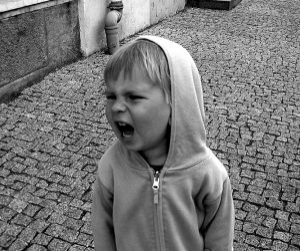 All children deal with anger on a daily basis. Thinking about it as a child, there is a lot to be angry about. Elder people
All children deal with anger on a daily basis. Thinking about it as a child, there is a lot to be angry about. Elder people It is important to understand that your child behaviour problems could not just be from attention seeking. There are many factors to take into consideration
It is important to understand that your child behaviour problems could not just be from attention seeking. There are many factors to take into consideration